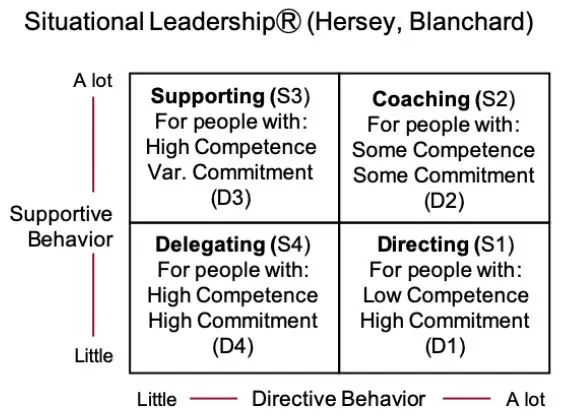
22 Jul Elevate Retail Management: Renew Collaborative Work In 2026
The traditional retail management style, where a single leader barks orders from a corner office, is quickly becoming a relic of the past. Today’s dynamic retail management environment demands a more adaptable approach – Situational Leadership. This framework recognizes that employees have different development needs at different times, and the leader’s style should adjust accordingly.

Why the Shift in Retail Management?
Several factors are driving this shift towards Situational Leadership in retail:
-
The Rise of the Retail Employee: Today’s retail workforce is populated by a new breed of employee. These skilled individuals, from sales associates to inventory specialists and visual merchandisers, crave autonomy and the chance to leverage their expertise in creating exceptional customer experiences. Micromanaging stifles their creativity, hinders performance, and ultimately leads to a disengaged workforce in retail management.
-
Information at Your Fingertips: The internet has empowered everyone with access to vast amounts of product data, industry trends, and customer insights in retail management. Employees can readily research product features, analyze local buying habits, and even come up with solutions to common customer pain points on their own. Leaders clinging to information control and unilateral decision-making miss out on the collective intelligence of their team.
-
The Need for Retail Agility: The retail landscape itself is constantly evolving. Customer expectations are ever-changing, and new technologies are disrupting traditional channels in retail management. Agility and innovation are crucial for success. Rigid hierarchies and top-down leadership styles hinder experimentation and adaptation. Imagine a clothing store facing a surge in online shopping. A leader stuck in the “old way” of doing things might struggle to adapt their marketing strategy and lose customers to online competitors. Leaders who empower their teams to brainstorm solutions, experiment with new omnichannel marketing approaches, and adjust strategies quickly are better equipped to navigate this ever-changing terrain.
Building Trust is the Foundation:
Modern retail employees seek leaders they can trust and respect, not simply fear or obey. Situational Leadership emphasizes transparency, open communication, and a genuine interest in employee well-being. This fosters a positive work environment that builds trust and creates a foundation for effective leadership. Imagine a team struggling to meet seasonal sales goals. A leader who lays blame and uses their position to pressure them will likely see a drop in morale and performance. Leaders who acknowledge the challenges, work collaboratively with the team to identify solutions, and offer support will create a culture of trust where employees feel empowered to give their best effort.
Situational Leadership Styles in Action:
Situational Leadership outlines four leadership styles that can be adapted to fit the development level of your employees:
- Directing (S1): Imagine a new cashier overwhelmed by the intricacies of the point-of-sale system. In this scenario, a Directing (S1) style is necessary. This involves setting clear goals (learning all cash register functions), providing step-by-step instructions (demonstrating each function), and closely monitoring performance (observing the cashier’s progress and offering immediate feedback).
- Coaching (S2): As that same cashier gains experience and confidence, a Coaching style (S2) becomes appropriate. The leader can offer guidance and support (answering questions about product knowledge) while encouraging independent problem-solving (allowing the cashier to handle transactions with minimal oversight).
- Supporting (S3): For a highly skilled and motivated sales associate consistently exceeding sales targets, a Supporting style (S3) works best. The leader provides ongoing feedback (reviewing monthly sales figures) while offering autonomy and resources (approving budget for a new sales training program) as the employee takes ownership of their goals.
- Delegating (S4): Imagine a seasoned inventory specialist with a proven track record of efficiency. Delegation (S4) is most effective. The leader assigns tasks and objectives (managing stock levels for the upcoming holiday season), trusting the employee to complete them with minimal oversight. Regular check-ins ensure alignment but allow the employee to leverage their expertise.
The Benefits of Situational Leadership in Retail Management:
By employing Situational Leadership, retail managers can reap a multitude of benefits:
- Improved Performance: Matching leadership style to employee development level leads to increased productivity and efficiency. Employees feel equipped to handle their tasks, leading to a smoother workflow and better results.
- Enhanced Employee Engagement: Employees feel valued, trusted, and empowered, leading to higher engagement and motivation. They take ownership of their work and contribute their best efforts to the team’s success.
- Increased Innovation: A culture that encourages independent thinking and problem-solving fosters innovation and creative solutions for retail challenges. With ownership over their tasks, employees are more likely to experiment with new ideas that can improve customer service, product displays, or marketing campaigns.
- Stronger Teams: Effective leadership builds strong, collaborative teams that work effectively towards shared goals. Situational Leadership fosters a sense of camaraderie and mutual respect, encouraging employees to learn from each other and support one another’s success.
- Reduced Turnover: Employees who feel supported, challenged, and empowered are less likely to leave the company. Situational Leadership creates a positive work environment with opportunities for growth and development, leading to a more stable and experienced workforce.
- Improved Customer Experience: When employees feel valued and engaged, it translates directly to a better customer experience. Empowered employees are more likely to go the extra mile to provide exceptional service, answer questions knowledgably, and create a positive and welcoming atmosphere for customers. This translates to higher customer satisfaction, increased loyalty, and ultimately, more sales.
Leading the Retail Management Symphony:
Situational Leadership isn’t a one-size-fits-all approach. Effective retail managers assess individual needs and adjust their style accordingly. They should continuously observe their employees’ performance, provide constructive feedback, and offer opportunities for growth and development. By doing so, they create a dynamic work environment where employees are empowered to thrive. Imagine a team launching a new product line. A leader utilizing Situational Leadership can provide clear direction to new hires on product features (S1), offer coaching and support to experienced salespeople on crafting compelling sales pitches (S2), empower seasoned department heads to manage their teams and develop new promotions (S3), and delegate tasks like social media marketing to a team member with proven digital marketing skills (S4). This adaptability ensures everyone feels valued, motivated, and equipped to contribute their best efforts, leading to a successful and adaptable retail team – a well-conducted retail symphony where every member plays a crucial role in achieving shared goals.
Ready to empower your retail team and unlock their full potential? Our Leadership program equips managers to adapt their leadership style, fostering a collaborative environment that drives innovation and exceptional customer service. Enroll today and watch your retail team transform into a high-performing unit, achieving outstanding results together.
Written by Amir Ashraff
SHRA Corporate Trainer
Amir is a trainer from SH Retail Academy. His passion for teaching and business handling gives him a lot of experience in teaching, training, retailing, customer service and operation management.
5,116 total views, 1 views today





